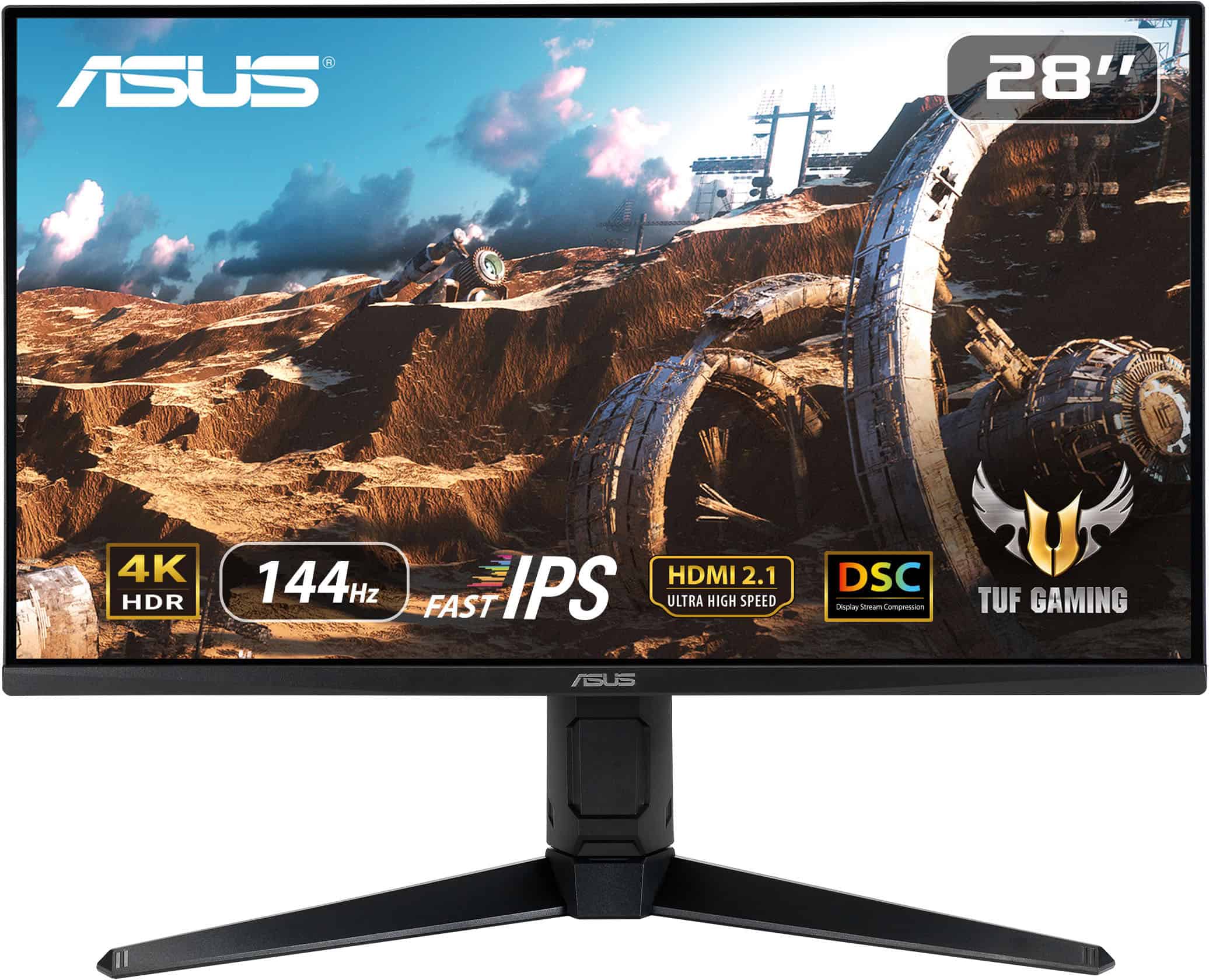We all know that for gamers choosing the right monitor is a critical component in how well a game runs and looks; and what factor is most important when choosing a monitor? The refresh rate. That’s because the refresh rate affects all aspects of your gaming experience. It determines how often the screen updates with new images per second. A higher refresh rate, such as 144Hz or 240Hz, offers smoother and more responsive gameplay compared to the standard 60Hz. But that usually comes at a cost.
Refresh rates are most important when it comes to fast-paced games where every frame counts – like FPS, fighting, and sports/racing games. A higher refresh rate monitor can provide you with smoother visuals, reduced motion blur, and increased responsiveness. And with all the options available, it can be overwhelming to select the right refresh rate for your gaming setup and your particular needs.
This article will explain what refresh rate is, why it matters for gamers, and how to choose the best one for you and your budget. We’ll also discuss other factors to consider when shopping for a gaming monitor so you can make an informed decision and get the most out of your gaming setup.

Refresh Rate: What Gamers Should Know
While a 60Hz monitor may be sufficient for casual gamers, higher refresh rates are essential for competitive players to minimize lag and provide a smoother experience. Monitors with 144Hz or 240Hz are commonly recommended for serious gaming, and some even go up to 360Hz for the ultimate performance. Choosing the best refresh rate depends on both the type of games played and the capabilities of the gaming rig. More powerful systems can handle higher refresh rates, leading to a noticeable difference in gameplay smoothness and responsiveness.
Understanding Refresh Rate
Simply put, refresh rate is how often a monitor shows a new image per second, measured in Hertz (Hz). A higher refresh rate means smoother motion and less blur, which is a big deal for fast-paced games. Think of it like flipping through a book: more pages per second means a smoother animation.
Why Refresh Rate Matters for Gamers
For gamers, refresh rate is crucial for a few reasons:
- Responsiveness: Higher refresh rates make games feel snappier. Your actions are reflected on screen faster, giving you a competitive edge.
- Smoothness: High refresh rates reduce motion blur, making movement in games look smooth and fluid.
- Immersion: Smoother visuals create a more immersive and enjoyable gaming experience.
Choosing the Right Refresh Rate
What refresh rate is right for you? Well, it depends on a few things:
- Your budget: Higher refresh rate monitors generally cost more.
- Your games: Faster-paced games like shooters and racing games benefit more from high refresh rates.
- Your graphics card: Your graphics card needs to be powerful enough to push high frame rates to take full advantage of a high refresh rate monitor.
So what’s the best refresh rate? The more, the better (usually), but when all things are factored in, look for a refresh rate of 120Hz—144Hz if you’re a gamer who likes titles with a lot of motion, fast-changing graphics, and action and require a lot of updates and precision. The range above 144Hz up to 175Hz is where you’ll usually get next-level performance at a pretty reasonable cost upgrade so if you can afford a monitor in that range, it would not only be a good idea but would also somewhat future-proof your configuration. Above that range, you start creeping into the more premium offerings where you get to the best of the best in technology. Monitors with a 240Hz rate are most common in this range, but there are some that go even higher.
The current highest (commercially available) refresh rate on a monitor comes on the Alienware AW2524H Gaming Monitor, which clocks in at an impressive 500Hz. Manufactured by Dell, this electrifying screen offers the world’s fastest refresh rate of 500Hz on an IPS (in-plane switching) gaming monitor that makes navigating the turbulence of fast-paced gameplay second nature.
Here’s a quick guide to help you choose:
Refresh Rate Table
| Refresh Rate | Best For | Cost |
|---|---|---|
| 60Hz | Casual gaming, everyday use | $ |
| 75Hz | Budget gaming, slightly smoother visuals | $ |
| 120Hz | Esports, competitive gaming | $$ |
| 144Hz | Most popular choice for gamers, good value | $$ |
| 165Hz | Smooth gaming, great for fast-paced action | $$$ |
| 240Hz+ | Enthusiasts, the smoothest experience | $$$$ |

Other Factors to Consider
Refresh rate isn’t the only thing that matters for a good gaming monitor. You’ll also want to consider:
- Resolution: Higher resolutions like 1440p or 4K offer sharper images, but they also demand more from your graphics card.
- Panel type: Different panel types (IPS, VA, TN) have different strengths and weaknesses in terms of color accuracy, response time, and viewing angles.
- Adaptive sync: Technologies like G-Sync and FreeSync help prevent screen tearing and stuttering.
Best High Refresh Rate Gaming Monitors for 2025
| Monitor | Size | Resolution | Refresh Rate | Panel Type | Response Time | Special Features | Estimated Price (USD) |
|---|---|---|---|---|---|---|---|
| Alienware AW2724HF | 27″ | 1920 x 1080 (FHD) | 360Hz (OC) | IPS | 1ms (GtG) | NVIDIA G-SYNC & AMD FreeSync Premium, VESA DisplayHDR 400 | $450 |
| Samsung Odyssey Neo G7 | 32″ | 2560 x 1440 (QHD) | 240Hz | Mini-LED | 1ms (GtG) | Quantum Matrix Technology, NVIDIA G-SYNC & AMD FreeSync Premium Pro, VESA DisplayHDR 1000 | $1000 |
| LG UltraGear 27GR95QE-B | 27″ | 2560 x 1440 (QHD) | 240Hz | OLED | 0.03ms (GtG) | NVIDIA G-SYNC Compatible & AMD FreeSync Premium, VESA DisplayHDR 600, 98.5% DCI-P3 color gamut | $1000 |
| MSI MEG 271QRF-QD | 27″ | 2560 x 1440 (QHD) | 240Hz | Rapid IPS | 1ms (GtG) | Quantum Dot technology, NVIDIA G-SYNC Compatible & AMD FreeSync Premium Pro, VESA DisplayHDR 600 | $800 |
| ASUS ROG Swift PG27AQN | 27″ | 2560 x 1440 (QHD) | 360Hz (OC) | IPS | 1ms (GtG) | NVIDIA G-SYNC & AMD FreeSync Premium, VESA DisplayHDR 600 | $700 |
| Gigabyte M28U | 28″ | 3840 x 2160 (4K) | 144Hz | IPS | 1ms (GtG) | HDMI 2.1, KVM switch, USB Type-C with 65W power delivery | $650 |
This table showcases some of the leading high refresh rate gaming monitors expected for 2025. These monitors offer a combination of high resolutions, fast response times, and adaptive sync technologies to deliver smooth, immersive gaming experiences.
Verdict
The best monitor refresh rate for your gaming build is a personal choice. Consider your budget, the games you play, and your graphics card’s capabilities. Remember, a higher refresh rate means smoother visuals and a more responsive gaming experience, giving you an edge in the virtual world.
Additional tips:
- If you’re unsure, 144Hz is a good starting point for most gamers.
- Research different monitors and read reviews before making a decision.
- Don’t forget to calibrate your monitor for the best picture quality!
Key Takeaways
- A higher refresh rate provides smoother gameplay.
- 144Hz or 240Hz are best for serious gaming.
- System power affects the benefits of higher refresh rates.
Understanding Monitor Refresh Rates for Gaming
Choosing the right monitor refresh rate is crucial for a great gaming experience. Different refresh rates offer varied levels of smoothness and responsiveness.
The Fundamentals of Refresh Rates and Frame Rates
Refresh rate is the number of times a monitor updates the display per second, measured in Hertz (Hz). Frame rate is the number of frames a graphics card produces per second, measured in frames per second (FPS). For smooth gameplay, both should be high. If a monitor has a refresh rate of 144Hz, it can show up to 144 frames per second. A higher refresh rate means smoother visuals and can reduce motion blur during fast-paced gaming.
Comparison of Popular Refresh Rates: 60Hz, 144Hz, 240Hz, and Beyond
Different monitors offer different refresh rates. 60Hz is the standard and works well for basic tasks and casual gaming. 144Hz is popular among gamers because it provides significantly smoother gameplay. 240Hz and 360Hz monitors are used by competitive gamers for the best performance. Higher refresh rates deliver crisper and more fluid images, enhancing the gaming experience.
| Refresh Rate | Use Case |
|---|---|
| 60Hz | Everyday use and casual gaming |
| 144Hz | Enthusiast gaming |
| 240Hz | Competitive gaming |
| 360Hz | Professional eSports |
Impact of Resolution on Gaming Monitors: From 1080p to 4K
Resolution affects the sharpness of the display. 1080p is common and works well with high refresh rates like 144Hz or 240Hz. 1440p is a middle ground that provides better visuals without demanding too much from the graphics card. 4K delivers stunning image quality but requires a powerful graphics card to maintain high frame rates. A higher resolution with a high refresh rate can offer an immersive experience but may be overkill for casual gamers.
Types of Monitor Panels: TN, IPS, and VA Explained
Monitors use different types of panels. TN panels have the fastest response times and lower input lag, ideal for competitive gaming. IPS panels offer better color accuracy and wider viewing angles, making them great for visual quality. VA panels provide good contrast and deep blacks. OLED and QD-OLED panels are cutting-edge, offering high contrast, fast response times, and excellent color, but they are expensive.
| Panel Type | Pros | Cons |
|---|---|---|
| TN | Fast response times, affordable | Poor color accuracy |
| IPS | Great colors, wide viewing angles | Slower response times |
| VA | Good contrast, deep blacks | Moderate response times |
| OLED/QD-OLED | Excellent visuals, fast response | Expensive |
Choosing the right monitor can greatly impact the gaming experience. Understanding the differences in refresh rates, resolutions, and panel types helps make an informed decision.
Frequently Asked Questions
Gamers often wonder if higher refresh rates actually make a difference. Below are some key answers to help understand how various refresh rates can impact gaming experiences.
What advantages do higher refresh rate monitors offer to gamers?
Higher refresh rate monitors help create smoother and more fluid motion. This can especially benefit fast-paced games where quick reactions are needed. The higher the refresh rate, the more frames per second (FPS) the screen can display, reducing motion blur and providing a competitive edge.
How does refresh rate impact gaming performance on consoles like the PS5?
The PS5 can support up to 120Hz on compatible monitors. A higher refresh rate on consoles like the PS5 can make gameplay feel more responsive, enhancing the gaming experience. However, not all games or monitors will support the highest refresh rates.
Are there noticeable differences when gaming on a 144Hz monitor compared to lower refresh rates?
Yes, gaming on a 144Hz monitor provides more dynamic visuals and reduced motion blur. Compared to 60Hz, the gameplay feels smoother and more responsive. This can be especially noticeable in action or first-person shooter (FPS) games.
For competitive gaming, is a 240Hz monitor considered the optimal choice?
A 240Hz monitor can be optimal for competitive gaming. It offers the fastest and most responsive experience. Professional gamers often use 240Hz screens to gain slight advantages. However, for many players, 144Hz is still very good and may be more cost-effective.
Can the human eye see the difference between 120Hz and 240Hz gaming monitors?
The difference between 120Hz and 240Hz can be subtle to many people. Some might perceive smoother motion and quicker response times at 240Hz, especially in fast games. But for some, the difference might not be significant enough to justify the higher cost.
What should be considered when choosing a monitor refresh rate for 4K gaming?
For 4K gaming, balance refresh rate with resolution and graphics card performance. Many current graphics cards struggle to push high frame rates at 4K. Thus, a 60Hz or 120Hz 4K monitor may be more practical unless you have a very powerful PC setup.







